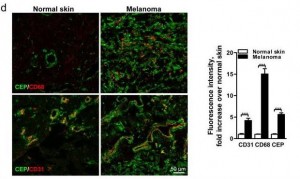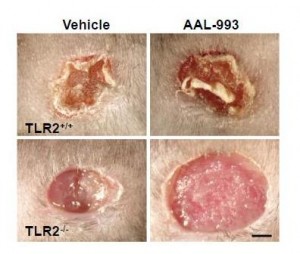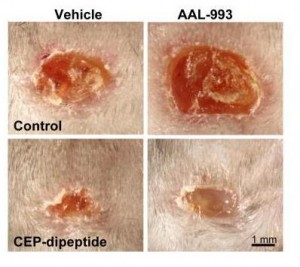UPDATE: Steven has created his own website with more information, www.recoveryfromas.com. Check it out!
In January I wrote about Steven Morgan’s recovery from Ankylosing Spondylitis on a modified version of PHD. Steve generously shared his email address and has been trading ideas with other Ankylosing Spondylitis (AS) sufferers.
Steve had a flare of his AS recently after drinking some dirty water on a camping trip, so he has had to re-recover from AS. He recounts his recent experiences here:
Commentary
AS sufferers often see symptoms flare when consuming starch. This may be, as Alan Ebringer has argued for the last 20 years, because the disease is caused by a Klebsiella infection in and around the gut. Infiltration of Klebsiella into lymph nodes around the gut can lead to formation of antibodies that cross-react between Klebsiella lipopolysaccharides and our native HLA-B27 and collagen. These autoantibodies can generate autoimmune attacks on collagen, a characteristic of all the spondyloarthropathic diseases. [1] [2] [3] [4] [5] [6] [7]
Klebsiella is a carbohydrate-metabolizing bacterium; in cell cultures, any carbohydrate – glucose, fructose, galactose, and compound sugars such as sucrose, lactose, and starch – will facilitate Klebsiella growth. This has led Ebringer to advocate a diet low in carbohydrate for AS patients. Since resistant starch is the largest source of carbohydrate fiber in modern diets, that means a low-starch, low-carb, high-protein diet.
The general tendency of PHD is the opposite: we recommend getting about 30% of calories as carbs, and 5/6 of all carb calories from glucose. On a natural whole foods diet, this means that starches are a significant part of the diet.
PHD is generally a gut-friendly, fiber-rich diet. A diverse gut flora is associated with good health, and achieving a diverse gut flora requires a diet rich in carbohydrate fiber including resistant starch from cooked-then-cooled starchy foods.
This raises a tension in many gut diseases:
- Symptoms flare whenever starches and other foods rich in carbohydrate fiber, such as the FODMAP bearing fruits and vegetables, are eaten.
- However, there cannot be a full recovery until a complete gut flora has been restored, which requires feeding probiotic bacteria with starches, fruits, and vegetables.
Ebringer’s recommendation of a low-carbohydrate diet is palliative but not necessarily curative. It reduces symptoms, but it doesn’t by itself roll back the infection or bring about growth of a beneficial gut microbiome.
As a temporary therapeutic measure to facilitate a full recovery, I often suggest using dextrose in place of starches as a source of carbs, along with steps to support immunity and development of a probiotic gut flora.
Dextrose is pure glucose. It is rapidly absorbed in the small intestine and therefore is unavailable to gut bacteria. Dextrose can therefore provide enough carbs to support immune function, mucus production, collagen repair, and general good health, without providing any fiber to gut bacteria.
Steps like consumption of liver, sun exposure, intermittent fasting, and circadian rhythm entrainment will further support immune function and aid suppression of the infection that caused the disease.
During this period of low-fiber dieting, eating fermented vegetable juice and other sources of probiotic bacteria can help displace bad bacteria from the gut. As probiotic microbes become more dominant in the gut, normal whole foods can gradually be restored, allowing a probiotic bacterial population to grow in place of the pathogenic bacteria.
Steven has largely followed this plan of attack, with success. It should work for all the spondyloarthropathic diseases including rheumatoid arthritis. I’d love to hear from others who try it.
References
[1] Fielder M et al. Molecular mimicry and ankylosing spondylitis: possible role of a novel sequence in pullulanase of Klebsiella pneumoniae. FEBS Lett. 1995 Aug 7;369(2-3):243-8. http://pmid.us/7649265.
[2] Ebringer A et al. Molecular mimicry: the geographical distribution of immune responses to Klebsiella in ankylosing spondylitis and its relevance to therapy. Clin Rheumatol. 1996 Jan;15 Suppl 1:57-61. http://pmid.us/8835505.
[3] Tani Y et al. Antibodies to Klebsiella, Proteus, and HLA-B27 peptides in Japanese patients with ankylosing spondylitis and rheumatoid arthritis. J Rheumatol. 1997 Jan;24(1):109-14. http://pmid.us/9002020.
[4] Rashid T et al. The potential use of antibacterial peptide antibody indices in the diagnosis of rheumatoid arthritis and ankylosing spondylitis. J Clin Rheumatol. 2006 Feb;12(1):11-6. http://pmid.us/16484874.
[5] Ebringer A et al. A possible link between Crohn’s disease and ankylosing spondylitis via Klebsiella infections. Clin Rheumatol. 2007 Mar;26(3):289-97. http://pmid.us/16941202.
[6] Rashid T, Ebringer A. Ankylosing spondylitis is linked to Klebsiella–the evidence. Clin Rheumatol. 2007 Jun;26(6):858-64. http://pmid.us/17186116.
[7] Rashid T et al. The link between ankylosing spondylitis, Crohn’s disease, Klebsiella, and starch consumption. Clin Dev Immunol. 2013; 2013:872632. http://pmid.us/23781254.















Recent Comments